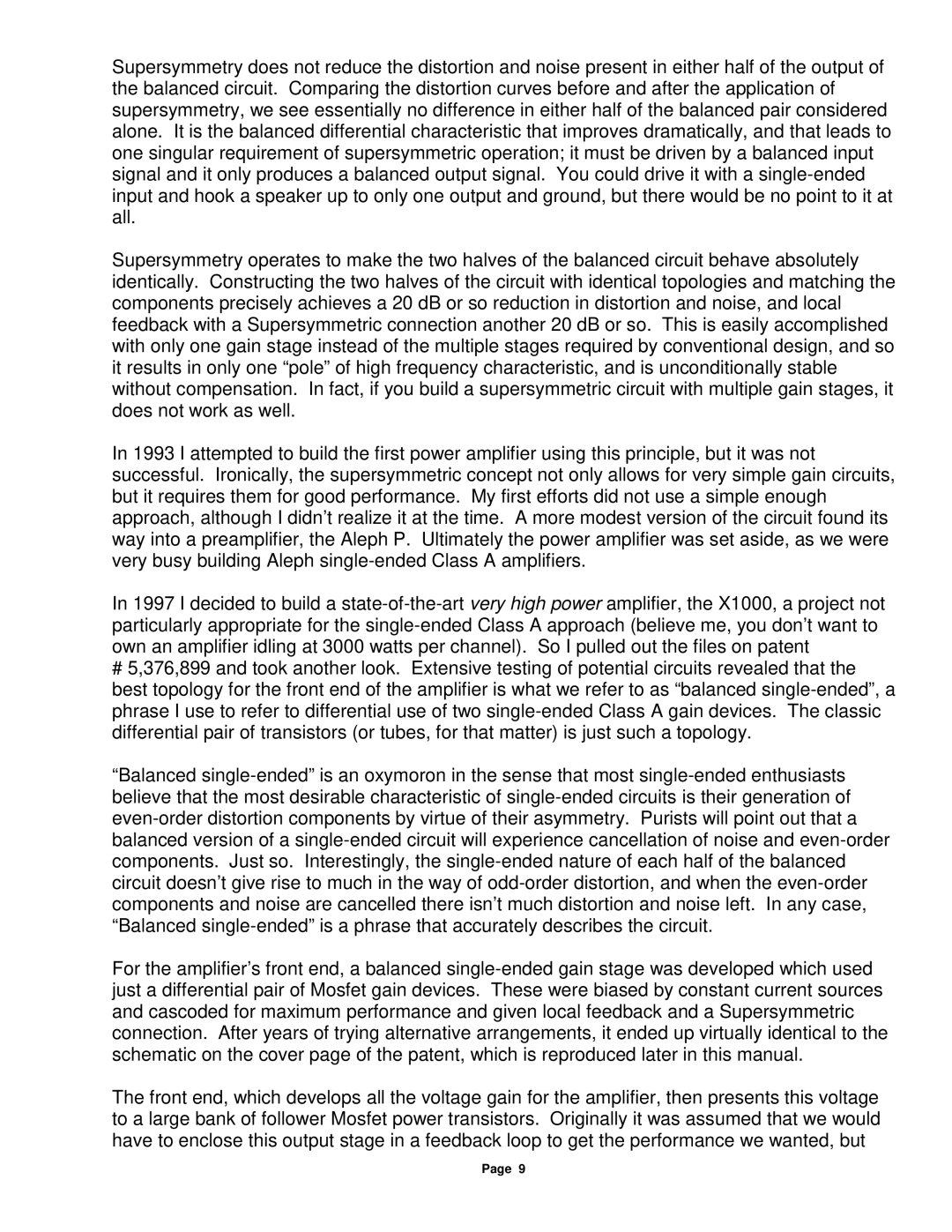X250 specifications
The Pass Labs X250 is a distinguished power amplifier that showcases the brand's commitment to delivering high-quality audio performance, blending robust engineering with innovative technology. Known for its exceptional build quality and sonic capabilities, the X250 is designed for audiophiles and music enthusiasts who demand the best from their audio equipment.At its core, the X250 is a Class A/B amplifier, which means it combines the efficiency of Class B with the superior sound quality of Class A. This hybrid design allows the amplifier to deliver high power output while maintaining low distortion levels, resulting in a clean, dynamic sound that captures the essence of the original recording. The amplifier delivers 250 watts into 8 ohms and 500 watts into 4 ohms, making it suitable for driving a wide range of loudspeakers with ease.
One of the standout features of the X250 is its use of Pass Labs' proprietary “Bias Current” technology. This innovative system optimizes performance by ensuring that the output devices operate in their most linear region, reducing crossover distortion and enhancing the amplifier's overall sound quality. This results in a more accurate and natural reproduction of audio, appealing to listeners who seek fidelity above all else.
Another notable characteristic of the X250 is its impressive dynamic range. The amplifier is designed to handle transient peaks with confidence, preserving the impact and nuance of musical passages, whether it's the delicate pluck of a guitar string or the thunderous notes of a full orchestra. The low noise floor further enhances the listening experience, allowing even the quietest details to be heard clearly.
The build quality of the X250 is equally impressive, featuring a rugged chassis and high-grade components that ensure durability and reliability. With its elegant appearance, the amplifier is not only a functional piece of equipment but also an attractive addition to any audio setup. The attention to detail in the design is evident, with a focus on minimizing vibrational interference and maintaining signal integrity.
In conclusion, the Pass Labs X250 is a remarkable power amplifier that combines advanced technology with exceptional sound quality. Its Class A/B design, Bias Current technology, and high power output make it a versatile choice for a wide range of audio applications. For those who value both performance and aesthetics, the Pass Labs X250 stands out as a superb option in the realm of high-fidelity audio amplification.
